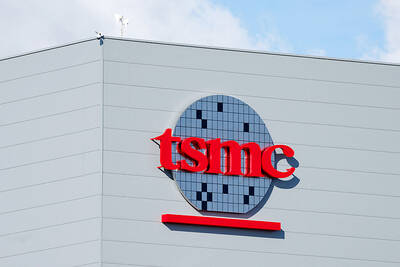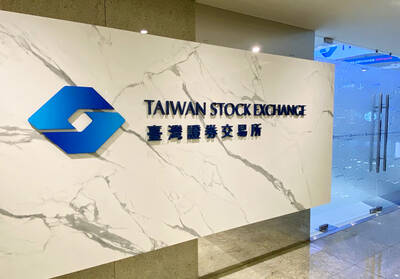Oil on Friday ended its worst week since October last year on a gain, a day after inflation concerns and worries over the trajectory of near-term demand triggered the largest daily loss in several months.
Wall Street banks said the sell-off was transitory.
Futures in New York ended the week 6.4 percent lower, with Friday’s rise doing little to reverse the previous session’s swift price plunge.
West Texas Intermediate (WTI) for April delivery rose US$1.42 to US$61.42 a barrel on Friday, but was down 6.4 percent for the week.
Brent crude oil for May delivery on Friday rose US$1.25 to US$64.53 a barrel, down 6.8 percent weekly.
A combination of factors conspired to bring a more than 30 percent rally this year to a screeching halt: US Treasury yields that pushed the US dollar higher, signs of weaker consumption in Asia in the short-term and the unwinding of long positions by commodity trading advisers.
Technical indicators had shown a market correction was overdue.
Still, investment banks from Goldman Sachs Group Inc to Morgan Stanley & Co said demand is set to recover and supplies would tighten, with the rout offering a buying opportunity for a market that might have gotten too long for its own good.
“What happened yesterday is not indicative of overly soft physical markets,” RBC Capital Markets analyst Michael Tran said. “The market was getting pretty stretched, so given the general headlines of China slowing to some degree, COVID returning in Europe and demand maybe not being as robust as people had thought, these are all just convenient opportunities for the market to rebase, retrench and reload heading into the summer.”
In the days leading up to Thursday’s price rout, money managers cut their bullish positioning in oil, with hedge fund’s combined wagers on rising Brent and WTI prices slumping to a five-week low in the week ending on Tuesday, weekly ICE Futures Europe and CFTC data showed.
However, even after the abrupt setback, futures are still up more than 20 percent so far this year on prospects for a recovery this year from the COVID-19 pandemic and OPEC+’s output discipline thus far.
The sell-off would prove to be “transient” and this week’s decline presents a buying opportunity, Goldman analyst Damien Courvalin said in a note.
There would still be a swift rebalancing of the market, with vaccinations driving an increase in mobility, he said.
Undersupply is likely to continue through this year should demand accelerate and OPEC+ continue to show output restraint, Morgan Stanley said in a report.
In that case, the market should remain in deficit, allowing inventories for countries in OPEC to normalize during the third quarter of this year, analysts Martijn Rats and Amy Sergeant wrote.
Meanwhile, Saudi Arabia said a drone attack at a Saudi Arabian Oil Co refinery in Riyadh had no effect on oil supplies, according to the state-run Saudi Press Agency, which said Yemen’s Iran-backed Houthi rebels were behind the attack.
The S&P 500 Energy Index was little changed on Friday after slumping 4.7 percent on Thursday for its biggest decline in more than three months.
There are signs of weakness in physical market demand, particularly in Asia. At the same time, Europe’s vaccine rollout remains sluggish — another headwind for the recovery in consumption.
The oil market’s structure also weakened markedly. Key gauges of supply for WTI and Brent crude veered nearer to a bearish contango structure, signaling oversupply.
Still, data from the US suggest that the latest bout of fiscal stimulus might help to spur travel there, while a dozen states are expanding access to COVID-19 vaccinations earlier than planned.
“Don’t mistake a correction for a derailment,” JPMorgan Chase & Co analyst Natasha Kaneva wrote in a note to clients. “The price move was likely accentuated by a washout of investor length, which has been steadily rising since late last year.”
Additional reporting by AP, with staff writer

Taiwan Semiconductor Manufacturing Co (TSMC, 台積電) secured a record 70.2 percent share of the global foundry business in the second quarter, up from 67.6 percent the previous quarter, and continued widening its lead over second-placed Samsung Electronics Co, TrendForce Corp (集邦科技) said on Monday. TSMC posted US$30.24 billion in sales in the April-to-June period, up 18.5 percent from the previous quarter, driven by major smartphone customers entering their ramp-up cycle and robust demand for artificial intelligence chips, laptops and PCs, which boosted wafer shipments and average selling prices, TrendForce said in a report. Samsung’s sales also grew in the second quarter, up

LIMITED IMPACT: Investor confidence was likely sustained by its relatively small exposure to the Chinese market, as only less advanced chips are made in Nanjing Taiwan Semiconductor Manufacturing Co (TSMC, 台積電) saw its stock price close steady yesterday in a sign that the loss of the validated end user (VEU) status for its Nanjing, China, fab should have a mild impact on the world’s biggest contract chipmaker financially and technologically. Media reports about the waiver loss sent TSMC down 1.29 percent during the early trading session yesterday, but the stock soon regained strength and ended at NT$1,160, unchanged from Tuesday. Investors’ confidence in TSMC was likely built on its relatively small exposure to the Chinese market, as Chinese customers contributed about 9 percent to TSMC’s revenue last

Taiwan and Japan will kick off a series of cross border listings of exchange-traded funds (ETFs) this month, a milestone for the internationalization of the local ETF market, the Taiwan Stock Exchange (TWSE) said Wednesday. In a statement, the TWSE said the cross border ETF listings between Taiwan and Japan are expected to boost the local capital market’s visibility internationally and serve as a key for Taiwan becoming an asset management hub in the region. An ETF, a pooled investment security that is traded like an individual stock, can be tracked from the price of a single stock to a large and

Despite global geopolitical uncertainties and macroeconomic volatility, DBS Bank Taiwan (星展台灣) yesterday reported that its first-half revenue rose 10 percent year-on-year to a record NT$16.5 billion (US$537.8 million), while net profit surged 65 percent to an unprecedented NT$4.4 billion. The nation’s largest foreign bank made the announcement on the second anniversary of its integration with Citibank Taiwan Ltd’s (花旗台灣) consumer banking business. “Taiwan is a key market for DBS. Over the years, we have consistently demonstrated our commitment to deepening our presence in Taiwan, not only via continued investment to support franchise growth, but also through a series of bolt-on acquisitions,” DBS